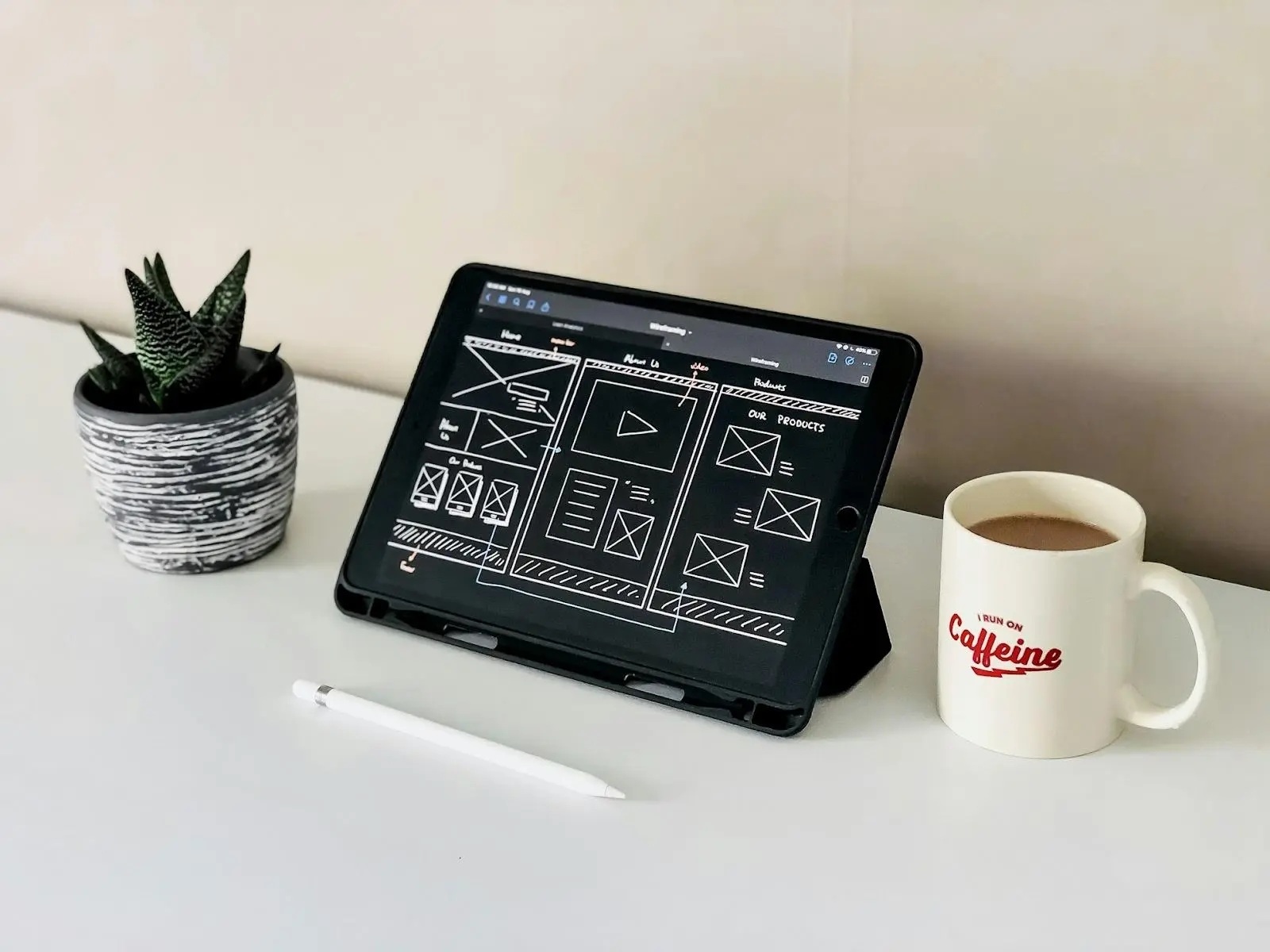What Makes a Website Design Stand Out: Key Elements Revealed
In today’s digital age, a website is often the first point of contact between a business and its potential customers. The design of a website can significantly influence the perception of a brand and impact its success. A well-designed website not only attracts visitors but also engages them, providing a seamless user experience that encourages interaction and conversion. So, what makes a website design stand out? Let’s delve into the key elements that distinguish an exceptional website from the rest.

User-Centric Design
At the heart of any standout website is a user-centric design. This means designing with the user’s needs and behaviors in mind. Understanding your audience is crucial; this involves conducting user research to gather insights about their preferences, habits, and challenges. You can learn more here about custom websites and how a user-centric design is intuitive, making it easy for visitors to navigate the site and find the information they need. This involves logical placement of menus, clear call-to-actions (CTAs), and a consistent layout. For instance, an e-commerce website should have a straightforward path to purchase, from browsing products to completing a transaction.
Responsive Design
With the increasing use of mobile devices, a responsive design has become non-negotiable. A responsive website automatically adjusts its layout and content to fit the screen size of the device being used. This ensures a consistent and optimal user experience, whether the visitor is on a desktop, tablet, or smartphone.
A standout website design seamlessly transitions across devices without compromising functionality or aesthetics. This not only improves user satisfaction but also enhances SEO performance, as search engines like Google prioritize mobile-friendly websites.
Visual Appeal and Aesthetics
Visual appeal plays a crucial role in making a website design stand out. Aesthetically pleasing websites often use a harmonious color scheme, high-quality images, and typography that aligns with the brand’s identity.
Consistency in visual elements creates a cohesive look and feel. For example, a website with a minimalist design might use ample white space, clean lines, and a restrained color palette to create a modern and professional appearance. Conversely, a creative agency might opt for bold colors and dynamic visuals to convey innovation and creativity.
Visual Appeal and Aesthetics
Visual appeal plays a crucial role in making a website design stand out. Aesthetically pleasing websites often use a harmonious color scheme, high-quality images, and typography that aligns with the brand’s identity.
Consistency in visual elements creates a cohesive look and feel. For example, a website with a minimalist design might use ample white space, clean lines, and a restrained color palette to create a modern and professional appearance. Conversely, a creative agency might opt for bold colors and dynamic visuals to convey innovation and creativity.
Engaging Content
Content is king, and this adage holds for website design. Engaging content is informative, relevant, and tailored to the target audience. It not only conveys the brand’s message but also drives user engagement.
A standout website incorporates a variety of content types, including text, images, videos, and infographics, to keep visitors interested. Storytelling is an effective way to connect with the audience on a personal level. For instance, a non-profit organization might share success stories and testimonials to illustrate the impact of their work.
Fast Loading Speed
In the digital age, speed is critical. A slow-loading website can frustrate users and lead to higher bounce rates. Research shows that even a one-second delay in page load time can result in a significant drop in conversions.
Optimizing your website’s performance is essential for a standout design. This can be achieved by minimizing the use of heavy images, leveraging browser caching, and using content delivery networks (CDNs). Regularly testing and improving load times will ensure that visitors have a smooth and efficient experience.
Effective Use of White Space
White space, or negative space, refers to the empty areas between elements on a webpage. It helps to create a clean and uncluttered design, making it easier for users to focus on the content.
Effective use of white space enhances readability and user experience. It allows the design elements to breathe and prevents the page from feeling overwhelming. A well-balanced layout with adequate white space can guide the user’s eye to the most important parts of the page, such as key messages or CTAs.
Intuitive Navigation
Navigation is a fundamental aspect of website design. A standout website offers intuitive navigation that allows users to effortlessly find what they’re looking for. This involves a clear and organized menu structure, logical page hierarchy, and accessible links.
Breadcrumbs, search bars, and well-labeled categories can further enhance navigation. For large websites with extensive content, a mega menu can provide a comprehensive overview of available options without cluttering the main interface.
Strong Brand Identity
A website is an extension of a brand, and its design should reflect the brand’s identity and values. Consistent use of brand elements such as logos, colors, fonts, and imagery reinforces brand recognition and trust.
A standout website tells a cohesive brand story through its design. This involves aligning visual and textual elements with the brand’s voice and mission. For example, a luxury brand might use elegant fonts and high-quality visuals to convey sophistication and exclusivity.
Accessibility
Accessibility is an essential aspect of modern website design. An accessible website ensures that all users, including those with disabilities, can access and interact with the content. This includes providing alt text for images, using proper heading structures, and ensuring sufficient color contrast.
Investing in Branding Agency Services can enhance your website’s impact by creating cohesive brand identities, helping your site communicate your values and stand out.
A standout website goes beyond compliance with accessibility standards (such as WCAG) and strives to create an inclusive experience for all users. This not only enhances usability but also broadens the audience’s reach.
SEO Optimization
Search engine optimization (SEO) is vital for driving organic traffic to your website. A standout website incorporates SEO best practices from the ground up, including clean code, fast load times, mobile-friendliness, and optimized content.
Keyword research and strategic placement of keywords in titles, headers, and content can improve search engine rankings. Additionally, ensuring that the website is easy to crawl and index by search engines will enhance its visibility.

In conclusion, a standout website design is a harmonious blend of aesthetics, functionality, and user experience. By focusing on user-centric design, responsiveness, visual appeal, engaging content, speed, white space, intuitive navigation, brand identity, accessibility, and SEO optimization, you can create a website that not only attracts visitors but also keeps them engaged and converts them into loyal customers. In a competitive digital landscape, these key elements will help your website stand out and succeed.


